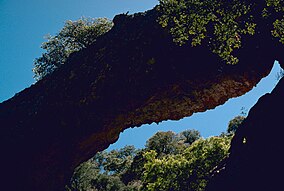Buenos Aires National Wildlife Refuge
| Buenos Aires National Wildlife Refuge | |
|---|---|
|
IUCN category IV (habitat/species management area)
|
|

A view in the refuge
|
|
|
Map of the United States
|
|
| Location | Pima County, Arizona, United States |
| Nearest city | Arivaca, Arizona |
| Coordinates | 31°33′00″N 111°33′02″W / 31.5500891°N 111.550662°WCoordinates: 31°33′00″N 111°33′02″W / 31.5500891°N 111.550662°W |
| Area | 117,107 acres (473.92 km2) |
| Established | 1985 |
| Governing body | U.S. Fish and Wildlife Service |
| Website | Buenos Aires National Wildlife Refuge |
Buenos Aires National Wildlife Refuge (Buenos Aires NWR) provides 117,107 acres (473.92 km2) of habitat for threatened and endangered plants and animals. The refuge was established in 1985.
The semidesert grassland supports the reintroduction of masked bobwhite quail and pronghorns. Prescribed and natural fires play a major role in maintaining and restoring the sea of grass that once filled the Altar Valley. Riparian (wetland) areas along Arivaca Cienega and Arivaca Creek attract an abundance of birds. Brown Canyon, to the west of the Arivaca Creek area, is nestled in the Baboquivari Mountains, where a sycamore-lined stream meanders through oak woodland.
The Refuge is home to 58 mammal species. Among the larger species are mule deer, white-tailed deer, pronghorn, javelina and puma. There are also more than 325 different bird species and 53 species of reptiles and amphibians.
There is also a small jaguar population in the area, which is contiguous, with Mexico. Between 2004 and 2007 an old male jaguar was followed by researchers in the area. The animal was called 'Macho B' by the researchers and has been previously photographed in 1996 in the area. During the study its home range compassed the mountains to east and west of the Altar Valley, which is situated in the Refuge. In addition at least one other jaguar was recorded in the area during that study.
The male jaguar, 'Macho B', is dead. The jaguar was euthanized after being captured on a snare trap. The trauma from the capture was too much for the 16-year-old feline.
Most of the Buenos Aires National Wildlife Refuge is open for visiting and research. Guided access is also available through Friends of Buenos Aires NWR programs.
Some 3,500 acres (14 km2) of the refuge (about 3% of its area) was closed in 2006 to public access due to human safety concerns. At that time there was a marked increase in violence along the border due to human and drug trafficking. The closed area extends north from the international border roughly ¾ of a mile. As of 2010, this portion remains closed; however, the Fish and Wildlife Service reports a marked decline in violence.
...
Wikipedia

